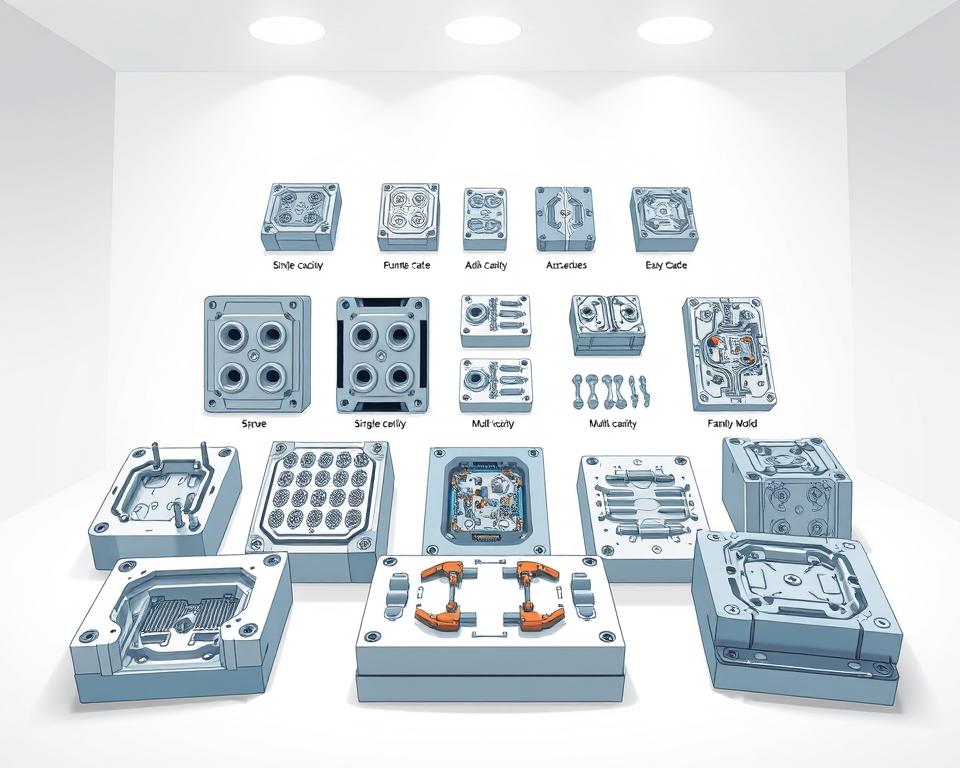How to Source Injection Molding Services from China
So, the big meeting just wrapped up. your new product is a go, the timeline is aggressive, and funding is, to put it mildly, limited. And suddenly someone—perhaps your superior or the finance head—says the fateful words that make any project manager’s heart skip a beat: “We should look at sourcing this from China.”
You nod, of course. On paper, it’s logical. The potential savings can be massive. However, your brain is racing with concerns. You’ve heard all the horror stories, right? Quality failures, endless communication gaps, shipments arriving months late and nothing like the prototype. It can feel like you’re being asked to walk a tightrope between landing a huge cost win for the company and steering your project straight into a ditch.
But here’s the catch. Procuring plastic mold company needn’t be a roll of the dice. It’s a project, just like any other. And its outcome hinges on the approach you take. It’s less about finding the absolute cheapest quote and more about finding the right partner and managing the process with your eyes wide open. Disregard those scary tales. Let’s go through a step-by-step guide to succeed.

Step One: Do Your Homework
Before searching suppliers or opening Alibaba, nail down your requirements. In fact, most overseas manufacturing headaches stem from a vague or incomplete RFQ. Don’t assume a remote factory can guess your needs. Sending a vague request is like asking a builder to quote you for “a house.” The responses you get will be all over the map, and none of them will be useful.
Your RFQ should be bulletproof—clear, detailed, and unambiguous. It’s the cornerstone of your entire effort.
So, what goes in it?
Begin with 3D CAD models. These are non-negotiable. Provide files in common formats (e.g., STEP, IGS) to prevent import issues. This is the authoritative CAD geometry.
Yet 3D models don’t cover everything. Add comprehensive 2D plans. This details critical info missing from the 3D file. Examples include tolerances (e.g., ‘25.00±0.05 mm’), material grade, surface finish requirements, and functional callouts. Call out smooth surfaces or precision hole sizes in big, bold notation.
Next up, material. Don’t just say “Plastic.” Don’t even just say “ABS.” Be explicit. Specify SABIC Cycolac MG38 in black, if that’s the resin you need. Why? Because there are thousands of plastic variations. Naming the precise grade locks in the mechanical, thermal, and aesthetic properties you need with plastic mold injection.
They can offer alternatives, but you must provide the initial spec.
Don’t forget the commercial info. What is your Estimated Annual Usage (EAU)? You must specify if it’s a 1K-part tool or a 1M-part production run. Tool style, cavity count, and unit cost are volume-driven.
The Great Supplier Hunt
With your RFQ perfected, who will you target? The web is vast but overwhelming. It’s easy to find a supplier; it’s hard to find a good one.
Your search will likely start on platforms like Alibaba or Made-in-China.com. They offer breadth but not depth. But think of them as a starting point, not the finish line. You’ll want to quickly build a list of maybe 10 to 15 companies that look promising.
Still, you must dig deeper. Perhaps hire a local sourcing specialist. They do cost extra. But a reputable agent brings pre-screened factories. They handle local liaison and oversight. As a newcomer, this offers priceless security. It’s schedule protection.
Also consider trade fairs. If you can attend, shows such as Chinaplas transform sourcing. Nothing beats a face-to-face conversation. You can handle sample parts, meet the engineers, and get a gut feeling for a company in a way that emails just can’t match. Also, leverage the tried-and-true referral network. Ask other project managers in your network. A recommendation from a trusted peer is often worth its weight in gold.
Sorting the Contenders from the Pretenders
After firing off that RFQ to a broad pool, estimates roll in. Some will be shockingly low, others surprisingly high. Your job now is to vet these companies and narrow it down to two or three serious contenders.
What’s the method? It involves both metrics and gut feel.
Begin with responsiveness. Do they respond quickly and clearly? Is their English good enough for complex technical discussions? But the key: do they probe your RFQ? A great supplier will review your RFQ and come back with thoughts. For instance: “Draft angle here could improve mold release. Tolerance check via CMM adds cost—proceed?” Consider that a big green light. It proves their expertise and involvement. Anyone who simply agrees to all specs is a red flag.
Then confirm their machinery specs. Get their tooling inventory. More importantly, ask for case studies of parts they’ve made that are similar to yours in size, complexity, or material. Don’t pick a micro-molding shop for large components.
Finally, inspect the factory. Skipping this is a mistake. As you vet staff, you must vet suppliers. You can either go yourself or, more practically, hire a third-party auditing firm in China to do it for you. They’ll send a local inspector to the factory for a day. They confirm legitimacy, audit ISO 9001, inspect equipment condition, and gauge the facility. That small investment can save you thousands.
Converting Digital Designs into Molded Parts
Once you’ve chosen your supplier. you agree on 50% deposit to start toolmaking and 50% balance after sample sign-off. Now the process kicks off.
Your supplier’s first deliverable is a DFM analysis. DFM means Design for Manufacturability. It’s their professional review of your CAD. It will highlight potential issues like areas with thick walls that could sink, sharp corners that could cause stress, or surfaces without enough draft angle for clean ejection from the mold. A thorough DFM is a sign of a professional operation. It’s a collaboration. You iterate with their team to optimize the mold.
With DFM sign-off, toolmaking begins. In a few weeks, you’ll see “T1 samples are on the way.” These represent the first trial parts. It’s your first real test.
Expect T1s to need tweaks. It’s par for the course. You’ll find minor defects, off-spec dimensions, or finish issues. You supply feedback, they tweak the tool, and T2 plastic mold in China samples follow. You may repeat this cycle a few times. The key for you, as the project manager, is to have this iteration loop built into your timeline from the start.
Finally, a flawless part arrives. It meets every dimension, the finish is flawless, and it functions exactly as intended. This is now the benchmark sample. You formally approve it, and this sample is now the standard against which all future mass-produced parts will be judged.
Completing the Sourcing Journey
Receiving the golden sample seems like victory, but you’re not done. Next up: mass manufacturing. How do you ensure that the 10,000th part is just as good as the golden sample?
You need a clear Quality Control plan. Often, you hire a pre-shipment inspection service. Use a third-party inspector again. They’ll sample parts, check dimensions and finish versus your drawings and golden sample, and report. You receive a full report with images and measurements. After your approval, you release the shipment and final funds. This step saves you from a container of rejects.
Finally, think about logistics. Clarify your Incoterms. Are you on FOB terms, where they load and you take over? Or EXW, where you handle everything from their gate? Your Incoterm selection drives landed expenses.
China sourcing is a long-haul effort. It’s about building a relationship with your supplier. See them as collaborators, not vendors. Transparent dialogue, respect, and process discipline win. It’s a challenging project, no doubt. But with this roadmap, you can succeed, achieve savings, and maintain quality. You’re set to succeed.

